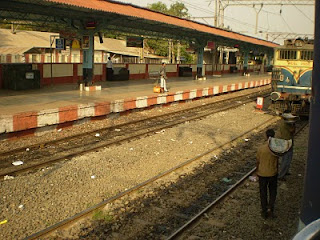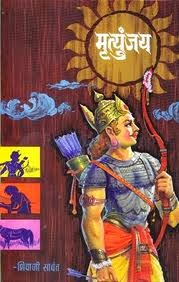A Tribute to WCG-2s

It has now become a well-known fact that I am totally crazy about my fascination with Indian trains especially now with my Facebook photos bearing testimony to that. Recently, there were a unique set of railway engines which were scrapped from services by the Central Railway. As usual, the event did not receive much publicity among the media circles since it was the demise of a railway engine.
On telling a friend of mine about this, he reacted in the usual way: "Akshay, it's just another railway engine which has been scrapped from service. What's the need to shed tears over a lifeless object like engines? I can still understand if it is a human being or someone dear whom you have lost but why single out an engine and cry?" The point he made was true to a certain extent especially considering our emotions can connect with anything regardless of whether tangible or intangible.
True that people who do not have an inclination towards trains will not identify with the pain associated with the demise. Most of the people who have an inclination towards trains remember WCG-2s for the loud noise that was caused by the blowers which were used to cool the dynamic brake resistors of the engines. Today, the WCG-2s no longer exist as they were the last set of purely DC (Direct Current) engines which can be operated only at 1500 volts. As a matter of fact, Mumbai is the only city in India which still has electric traction under 1500 volts.
The Mumbai division of the Central Railways had 57 WCG-2 locomotives in all. They came into prominence as late as 1992--1996 when the Mumbai division were desperately short of motive power due to the aging and failure prone WCM-1, WCM-2, WCM-4 and WCM-5 fleet. The punctuality of trains that came in and went out of Mumbai CST went haywire due to massive locomotive failures. In this period, the WCG-2 did a commendable job by hauling several mail and express trains. Ironically, the Mumbai--Pune Deccan Queen Express was hauled by a WCG-2 just once.
As the work for converting power lines from DC (Direct Current) to AC (Alternating Current) began in and around Mumbai, the WCG-2s were sent to perform banking duties on both the Thull Ghats stretching from Kasara to Igatpuri on the Mumbai--Howrah line and on the Bhore Ghat extending from Karjat to Lonavla on the Mumbai--Pune line. Until February 2010, the WCG-2s hauled certain express trains that departed from Mumbai. Now as they are replaced with the sleek electric engines which are able to produce more horsepower as compared to the WCG-2s, the poor things continued to do the jobs assigned to them.
Recently, a friend of mine sent me a poem related to the WCG-2, written specially mourning the demise of the engines, I couldn't help but be awed of the total impact it had on a whole generation which lived through the 1990s.
On telling a friend of mine about this, he reacted in the usual way: "Akshay, it's just another railway engine which has been scrapped from service. What's the need to shed tears over a lifeless object like engines? I can still understand if it is a human being or someone dear whom you have lost but why single out an engine and cry?" The point he made was true to a certain extent especially considering our emotions can connect with anything regardless of whether tangible or intangible.
True that people who do not have an inclination towards trains will not identify with the pain associated with the demise. Most of the people who have an inclination towards trains remember WCG-2s for the loud noise that was caused by the blowers which were used to cool the dynamic brake resistors of the engines. Today, the WCG-2s no longer exist as they were the last set of purely DC (Direct Current) engines which can be operated only at 1500 volts. As a matter of fact, Mumbai is the only city in India which still has electric traction under 1500 volts.
The Mumbai division of the Central Railways had 57 WCG-2 locomotives in all. They came into prominence as late as 1992--1996 when the Mumbai division were desperately short of motive power due to the aging and failure prone WCM-1, WCM-2, WCM-4 and WCM-5 fleet. The punctuality of trains that came in and went out of Mumbai CST went haywire due to massive locomotive failures. In this period, the WCG-2 did a commendable job by hauling several mail and express trains. Ironically, the Mumbai--Pune Deccan Queen Express was hauled by a WCG-2 just once.
As the work for converting power lines from DC (Direct Current) to AC (Alternating Current) began in and around Mumbai, the WCG-2s were sent to perform banking duties on both the Thull Ghats stretching from Kasara to Igatpuri on the Mumbai--Howrah line and on the Bhore Ghat extending from Karjat to Lonavla on the Mumbai--Pune line. Until February 2010, the WCG-2s hauled certain express trains that departed from Mumbai. Now as they are replaced with the sleek electric engines which are able to produce more horsepower as compared to the WCG-2s, the poor things continued to do the jobs assigned to them.
Recently, a friend of mine sent me a poem related to the WCG-2, written specially mourning the demise of the engines, I couldn't help but be awed of the total impact it had on a whole generation which lived through the 1990s.


Comments
Jaganniwas Iyer, New Delhi